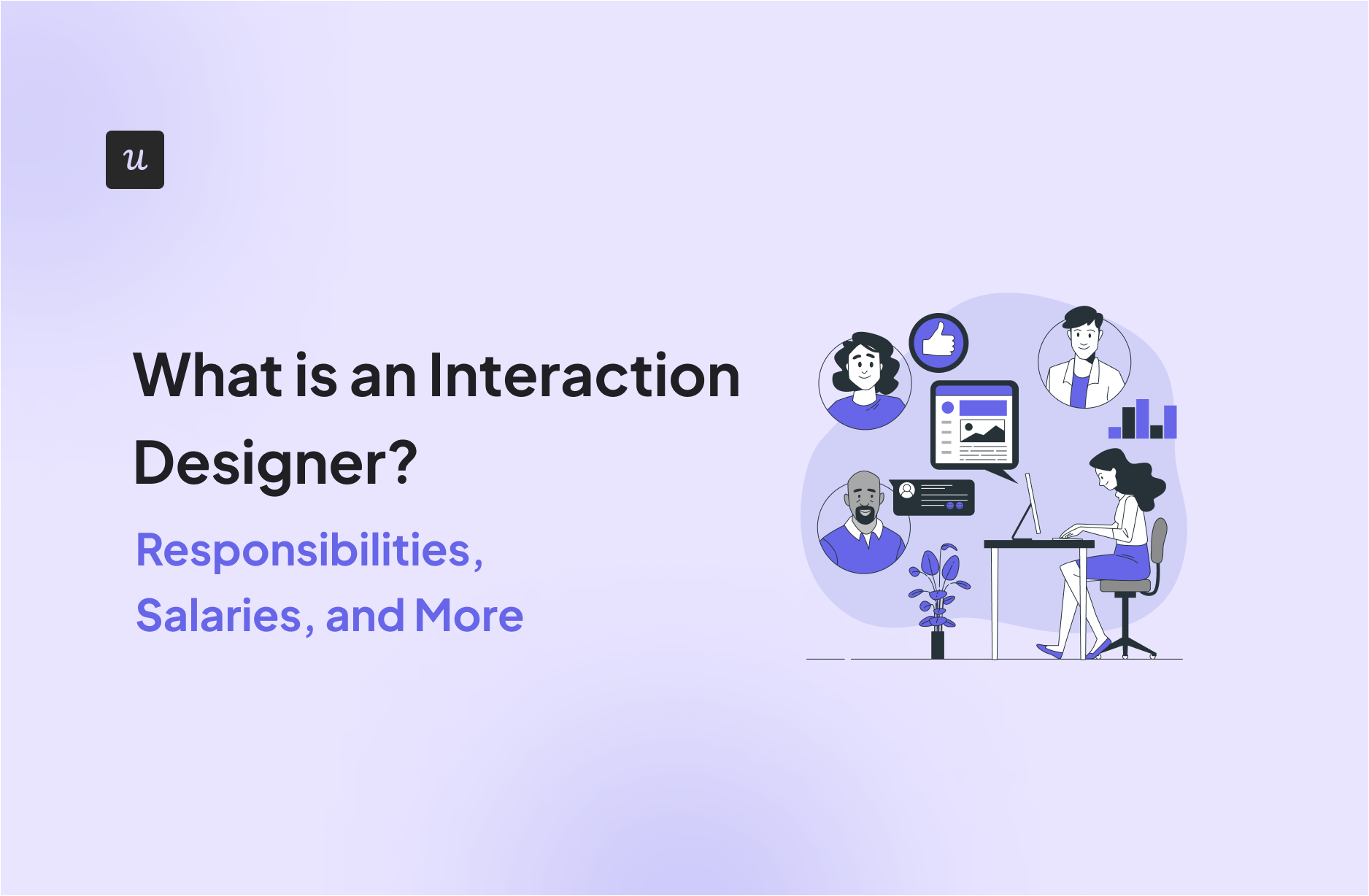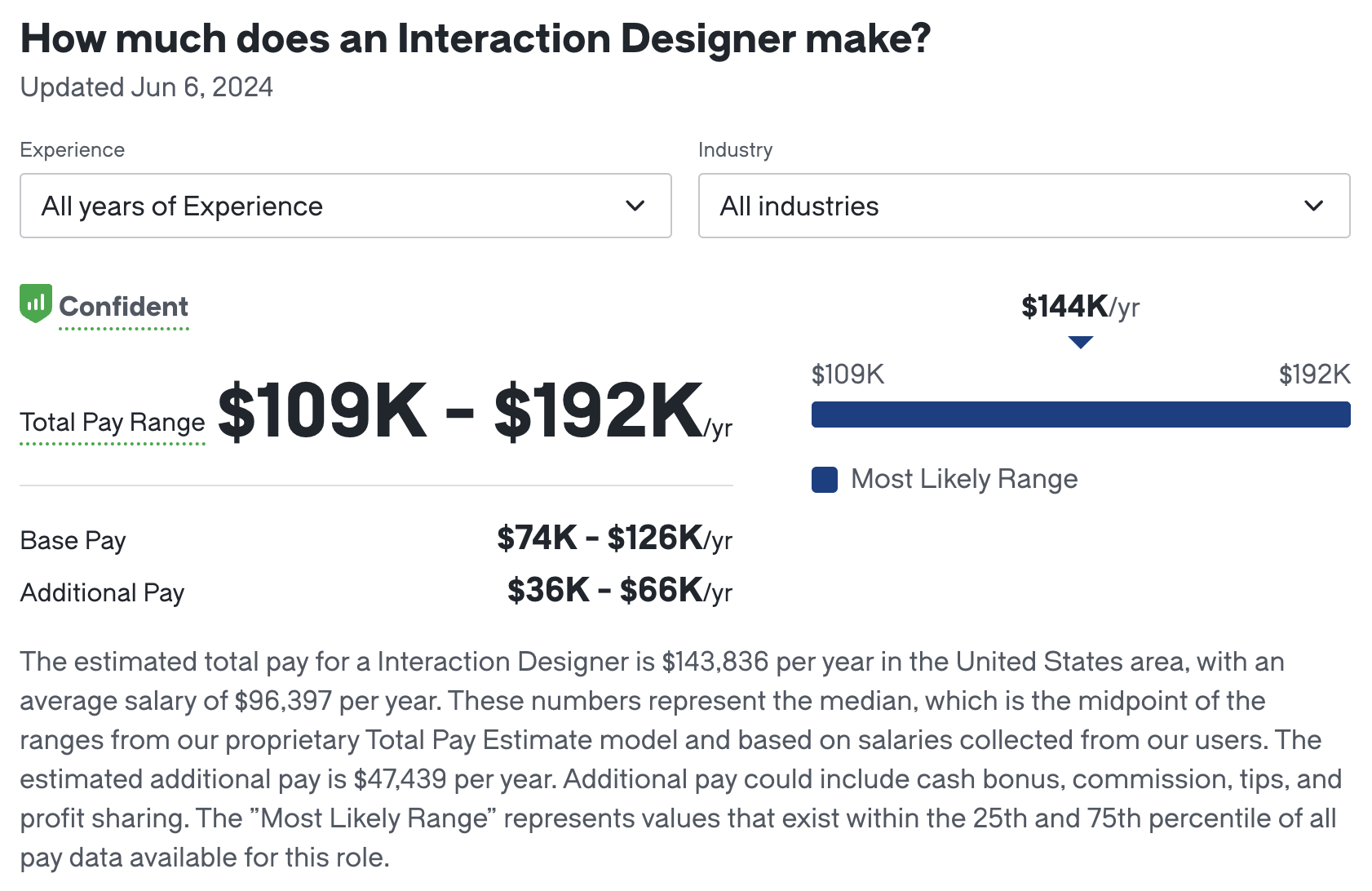
Try Userpilot Now
See Why 1,000+ Teams Choose Userpilot

What is an interaction designer?
An interaction designer focuses on creating intuitive and engaging product interfaces that enhance user experiences. They optimize user flows, develop interactive prototypes, and collaborate with UX designers, developers, and product managers to ensure cohesive design implementation.
What does an interaction designer do?
An interaction designer is responsible for shaping how users interact with digital products, ensuring the experience is smooth and engaging. They design the interactive elements of interfaces, such as buttons, menus, and transitions, to make them intuitive and user-friendly.
By conducting user research and testing, they gather feedback to refine and improve the user experience. Interaction designers also collaborate closely with other teams to ensure design practices meet both user needs and business goals.
Interaction designer’s main responsibilities
An interaction designer is responsible for creating engaging and intuitive user experiences for digital products, particularly in the SaaS industry. They focus on designing interactive elements that enhance user satisfaction and usability.
Here are their main responsibilities:
- Design interactive elements: Create buttons, menus, and other user interface components that are intuitive and user-friendly.
- Optimize user flows: Develop seamless user journeys to improve engagement and retention.
- Prototype development: Build interactive prototypes to test and refine designs before implementation.
- Conduct user research: Gather and analyze user feedback to inform design decisions and improve the user experience.
- Usability testing: Plan and execute usability tests to identify and resolve interaction issues.
- Collaborate with cross-functional teams: Work closely with UX designers, developers, and product managers to ensure cohesive design implementation.
- Maintain design systems: Contribute to and update design systems to ensure consistency across all products.
- Stay updated with industry trends: Keep abreast of the latest design trends, tools, and technologies to continually improve design practices.
- Document design processes: Create detailed documentation of design processes, guidelines, and standards for team use.
- Support product development: Collaborate with product teams to align design work with business goals and user needs.
- Facilitate design reviews: Lead design review sessions to gather feedback and make iterative improvements.
Interaction designer salary
According to Glassdoor, the estimated total pay for an interaction designer in the United States is $143,836 per year. This includes an average base pay of $96,397 per year and additional pay of $47,439 per year, which could consist of cash bonuses, commissions, tips, and profit sharing. The total pay range for this role is $109,000 to $192,000 per year.

Experience level significantly impacts an interaction designer’s salary:
- 0-1 year: $89,000 – $164,000 per year
- 1-3 years: $101,000 – $180,000 per year
- 4-6 years: $119,000 – $204,000 per year
- 7-9 years: $132,000 – $222,000 per year
- 10-14 years: $150,000 – $254,000 per year
- 15+ years: $169,000 – $290,000 per year
Industries with high salaries for interaction designers include:
- Financial Services: $165,000 – $247,000 per year
- Information Technology: $137,000 – $224,000 per year
- Retail & Wholesale: $140,000 – $214,000 per year
- Telecommunications: $135,000 – $203,000 per year
- Hotels & Travel Accommodation: $123,000 – $193,000 per year
These figures highlight the significant influence of experience and industry on the earning potential of interaction designers.
Interaction designer career path
An interaction designer’s career path involves progressing through various roles that build on experience, skills, and leadership capabilities.

- Junior interaction designer: Starting as a junior interaction designer, your primary focus is to assist senior designers with various tasks, including conducting user research, creating wireframes and prototypes, and supporting the development of design projects.
- Interaction designer: As you progress to an interaction designer, you begin to take on more responsibility by leading smaller projects and collaborating closely with cross-functional teams, including developers and product managers. Your duties expand to include conducting usability testing, refining user interfaces based on feedback, and ensuring that design solutions are both user-friendly and aligned with business goals.
- Senior interaction designer: With several years of experience, you advance to a senior interaction designer. In this position, you lead major design projects, mentor junior designers, and play a key role in developing design strategies. Your responsibilities include overseeing the creation of detailed design specifications, ensuring consistency across all user interfaces, and driving the overall user experience vision. This role demands a deep understanding of user behavior, advanced problem-solving skills, and the ability to manage and inspire a design team.
- Lead interaction designer: As a lead interaction designer, you take on a leadership role within the design team. You are responsible for setting design standards and guidelines, driving innovation in design practices, and aligning the design work with the company’s strategic objectives. Your duties include overseeing the work of senior and junior designers, managing design systems, and ensuring that all design projects meet high-quality standards.
- Design director: At the pinnacle of your career, you become a design director. In this role, you manage multiple design teams and drive the overall design vision for the company. Your role involves strategic decision-making at the executive level, integrating design thinking into the broader business strategy. You oversee the professional development of your design staff, foster a culture of creativity and innovation, and represent the design function in executive meetings.
Best practices for being a great interaction designer
To excel in interaction design, follow these best practices that enhance both user experience and design quality:
- Understand your users: Conduct thorough user research to grasp the needs, behaviors, and pain points of your target audience. This ensures your designs are user-centric and effectively address user requirements.
- Focus on usability: Prioritize creating interfaces that are intuitive and easy to navigate. Regular usability testing helps identify and resolve any issues that might hinder the user experience.
- Iterate frequently: Embrace the iterative nature of design. Develop prototypes, test them with real users, gather feedback, and refine your designs. Continuous iteration leads to polished and effective user interfaces.
- Collaborate with others: Engage closely with UX designers, developers, product managers, and other stakeholders. Effective collaboration ensures cohesive design implementation and alignment with business objectives.
- Stay updated with industry trends: Keep abreast of the latest design trends, tools, and technologies. Continuous learning and adaptation are crucial to maintaining a high standard of design excellence and innovation.
Interaction designer FAQs
- What is the difference between a UX designer and an interaction designer? A UX designer focuses on the overall user experience, including research, usability, and user flows, while an interaction designer specifically designs the interactive elements of a product, such as buttons, menus, and animations.
- What is an example of an interaction designer? An example of an interaction designer is a professional who designs the interactive features of mobile and web apps, ensuring that touch gestures, transitions, and feedback mechanisms are intuitive and engaging.
- What is the job description of an interactive designer? An interactive designer creates engaging and intuitive user interfaces by designing interactive elements, conducting user research, developing prototypes, and collaborating with cross-functional teams to enhance user experience.
- Is interaction design the same as graphic design? No, interaction design focuses on the functionality and usability of interactive elements in a digital product, while graphic design is concerned with visual aesthetics, layout, and branding.
Conclusion
We hope this guide has provided you with valuable insights into the roles, responsibilities, and rewards associated with this role.
Looking into tools for interaction designers? Userpilot is an all-in-one product platform with engagement features and powerful analytics capabilities. Book a demo to see it in action!








